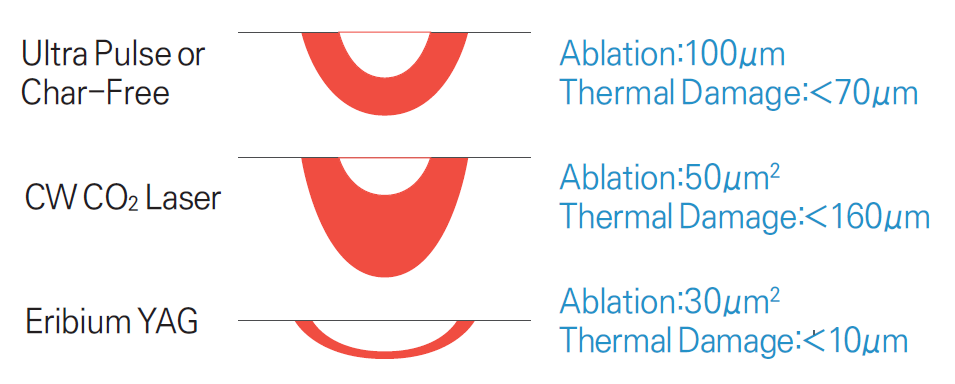
▶ Previous Artlcle: #7-5. CO2 Laser
Er:YAG laser is one of representative ablative lasers along with CO2 laser. As with CO2 laser, it uses water as a chromophore, but its absorption coefficiency for water is 12-fold to 18-fold higher than CO2 laser. Er:YAG laser vaporizes a tissue through photothermal effect to remove lesions or transfer heat into the tissue because water is used as a chromophore.
Although absorbance of water is so high that the heat transfer effect is very weak compared to CO2, the effect of transferring heat to tissue increases as long pulsed Er:YAG laser comes out, thus giving the same thermal effect as nonablative laser. Er:YAG laser, like CO2 laser, is available for any purpose of removing tissues without considering selectivity for chromophores such as melanin or hemoglobin.
[Advertisement] DUAL FINE BEAM – Manufacturer: SNJ(www.medicalsnj.com)]
Once a laser beam is irradiated as absorption coefficiency for water is high 12-fold to 18-fold, it is first absorbed into water of the epidermis, leading to momentarily rising temperature and vaporization. As a result, the epidermal tissue expands and then bursts. In this case, a unique popping sound specific to Er:YAG laser is heard.
This is a sound caused by the acoustic wave breaking the sound barrier as the tissue bursts. Like this, since Er:YAG laser beam shows a laser-tissue interaction from the upper epidermis, it is capable of vaporizing a tissue of the exact depth with low penetration depth into the tissue and minor thermal damage to surrounding tissues.
Er:YAG laser vaporizes a tissue with approximately 3-4 µm in thickness with 1 J/cm2 fluence, and even if it vaporizes a tissue with 30 µm in depth, the depth of thermal damage to surrounding tissues is less than 10 µm (Fig.1).

Figure 1. Depth of penetration and thermal damage.
-To be continued




















